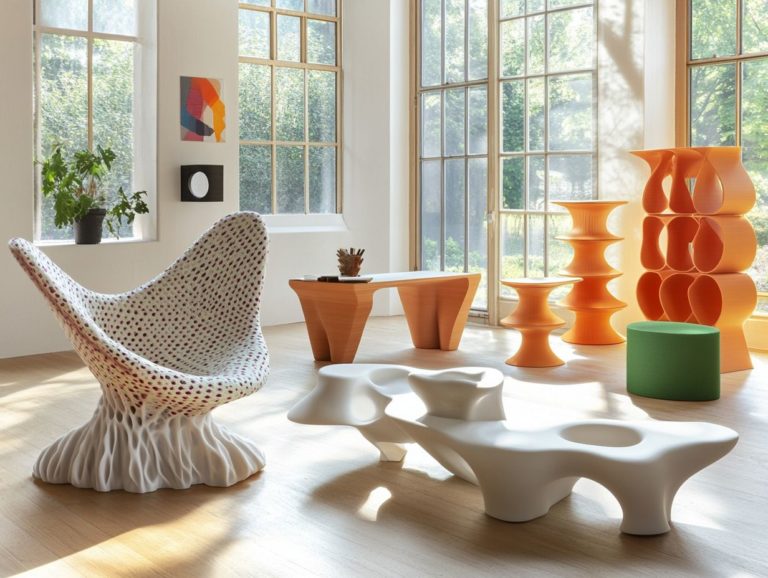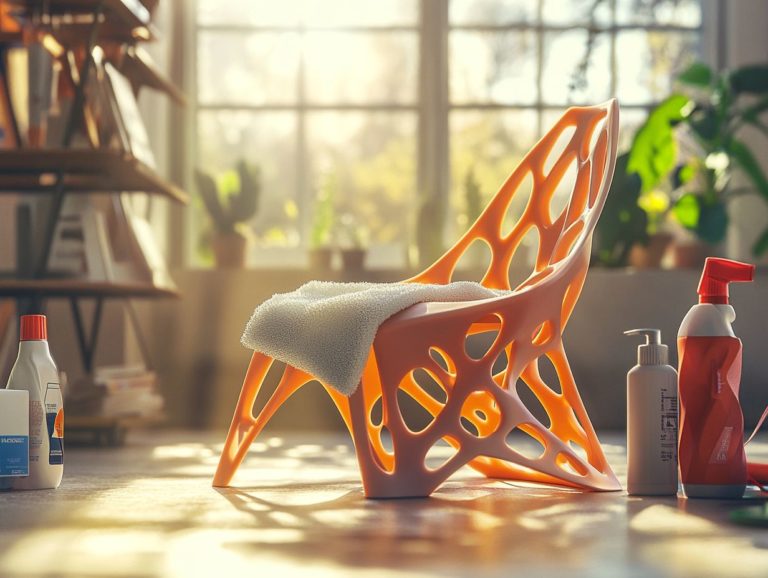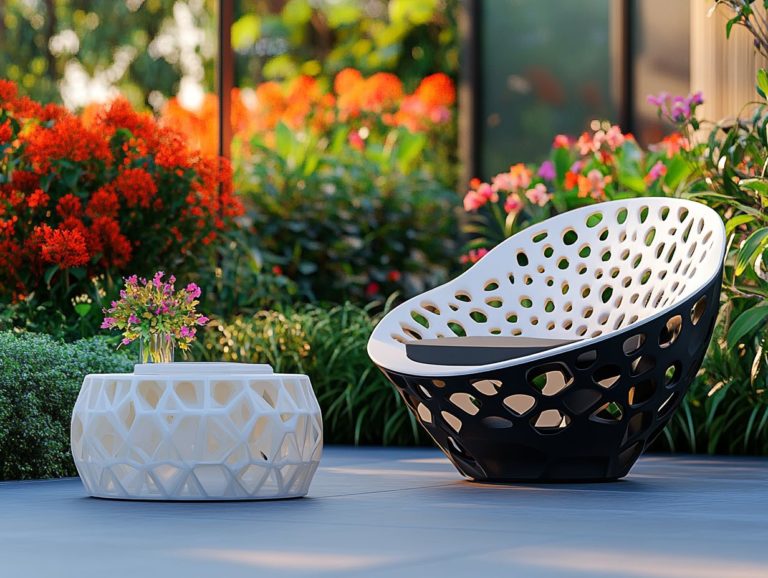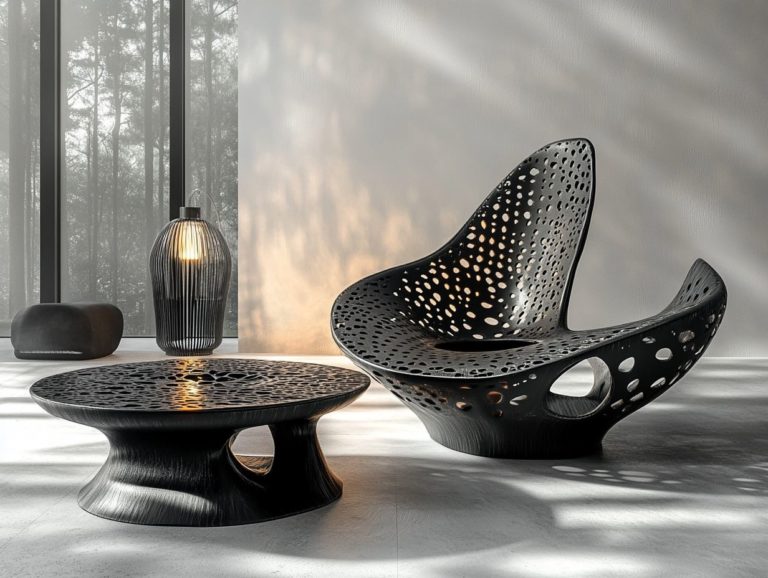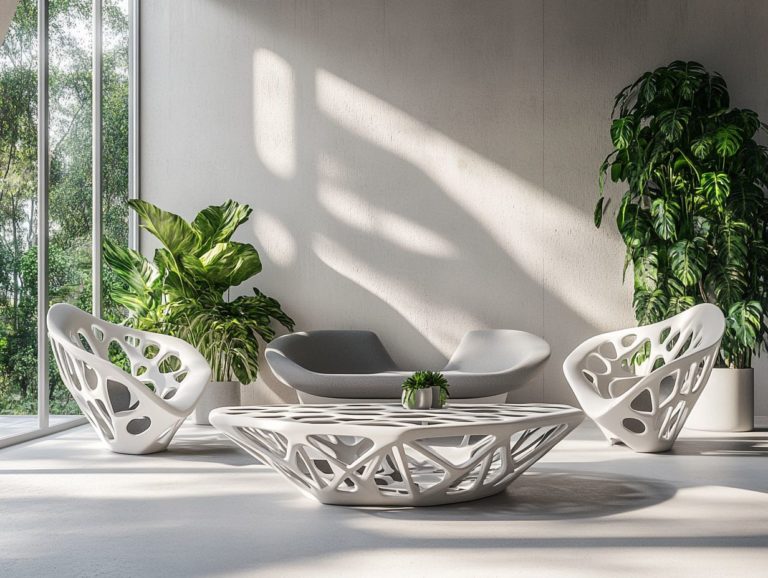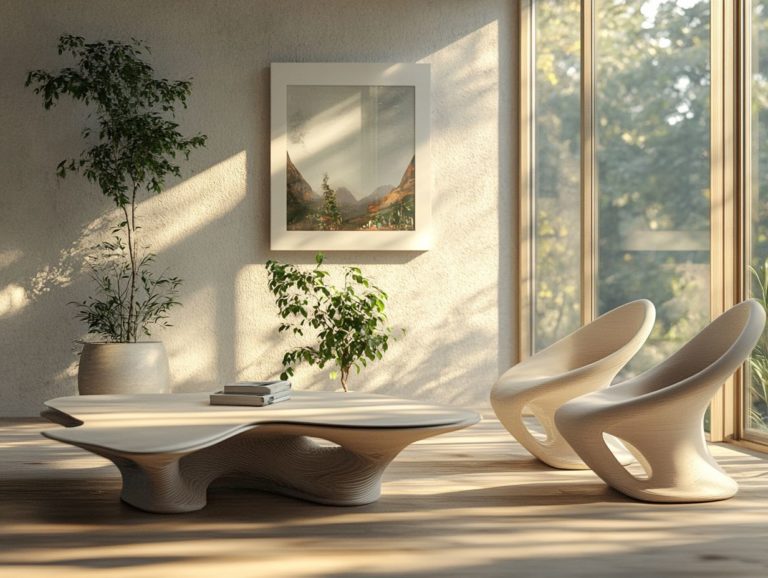The Cost of 3D-Printed Furniture: Is it Worth It?
Discover how 3D printing is changing the way we think about furniture! This technology is revolutionizing how we design and produce furniture. As it becomes easier to access, you may wonder about its benefits, limitations, and overall worth.
This article explores the pros and cons of 3D-printed furniture, examining cost factors and comparing them to traditional options. By the end, you ll have a clearer insight into whether investing in 3D-printed furniture aligns with your vision for your home.
Contents
- Key Takeaways:
- The Pros and Cons of 3D-Printed Furniture
- The Cost of 3D-Printed Furniture
- Is 3D-Printed Furniture Worth the Cost?
- Frequently Asked Questions
- 1. What factors determine the cost of 3D-printed furniture?
- 2. Is the cost of 3D-printed furniture worth it compared to traditional furniture?
- 3. Are there any hidden costs associated with 3D-printed furniture?
- 4. Does the cost of 3D-printed furniture vary depending on the printer?
- 5. Are there any cost-saving benefits to choosing 3D-printed furniture?
- 6. How do I know if the cost of 3D-printed furniture is within my budget?
Key Takeaways:
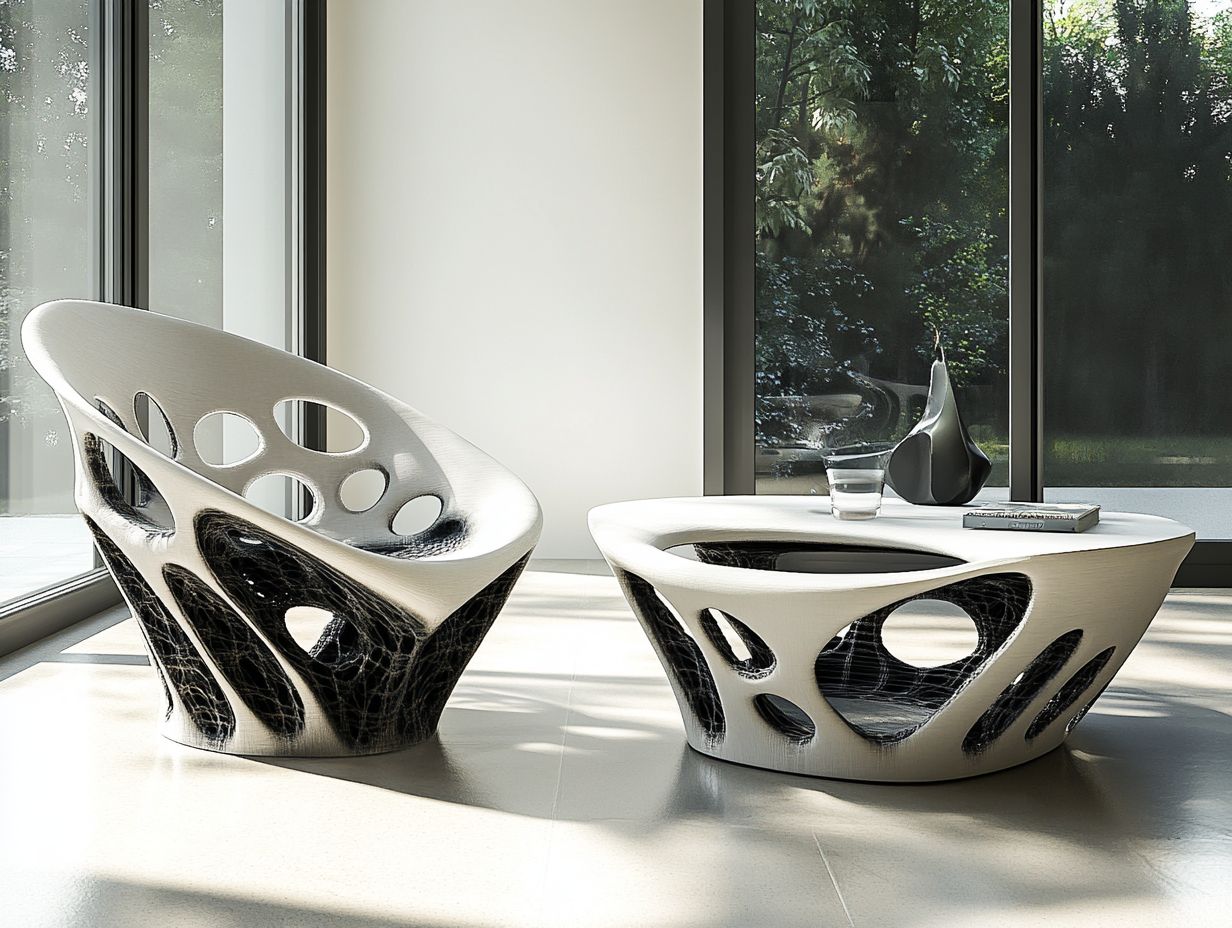
- 3D-printed furniture offers customization and design flexibility, but this comes at a higher cost compared to traditional furniture.
- Factors such as materials, size, and design complexity influence the cost of 3D-printed furniture, often making it pricier than traditional options.
- The decision to invest in 3D-printed furniture depends on personal preferences and values, along with considerations of quality and longevity compared to traditional furniture.
What is 3D Printing and How Does it Work?
3D printing is a groundbreaking manufacturing process that lets you create three-dimensional objects from a digital file using a method of building objects layer by layer with a 3D printer. This technology has transformed various industries, especially in custom furniture design, allowing for intricate modeling and rapid prototyping.
This approach enhances creativity and simplifies projects while maintaining exceptional design quality. At the heart of it all is a carefully crafted 3D model, made with advanced software that ensures every detail aligns with your project scope and quality standards.
You ll find various types of 3D printers, each tailored for specific purposes and materials. For instance, FDM printers are great for basic prototypes, while SLA printers deliver high-resolution finishes for intricate designs.
Combining modeling and printing technologies drives innovation in furniture creation, helping you visualize the final product to meet your specifications and expectations. This synergy allows you to push the boundaries of what s possible.
The Pros and Cons of 3D-Printed Furniture
The rise of 3D-printed furniture has sparked considerable discussion within the furniture industry. It presents a mix of advantages and disadvantages that affect design quality, pricing, and user experience.
Understanding these pros and cons is crucial, whether you’re a designer or a consumer. This knowledge shapes your decisions regarding customization, project management, and overall satisfaction.
Advantages of 3D-Printing in Furniture
3D printing offers numerous advantages for furniture design, allowing you to craft custom pieces with stunning levels of photorealism. This means you can achieve exceptional design quality while significantly reducing turnaround times.
This innovative approach amplifies customization options and boosts efficiency in production, making it perfect for complex project requirements. Imagine quickly iterating on geometric shapes, making real-time adjustments and corrections, which reduces the risk of errors.
Take inspiration from the automotive industry, where companies use 3D printing to produce intricate components. Furniture design can similarly benefit from this technology, transforming aesthetics by seamlessly merging functionality with striking visual appeal.
Explore how 3D printing can elevate your furniture projects and consider investing in this innovative technology for your next design endeavor!
Disadvantages of 3D-Printing in Furniture
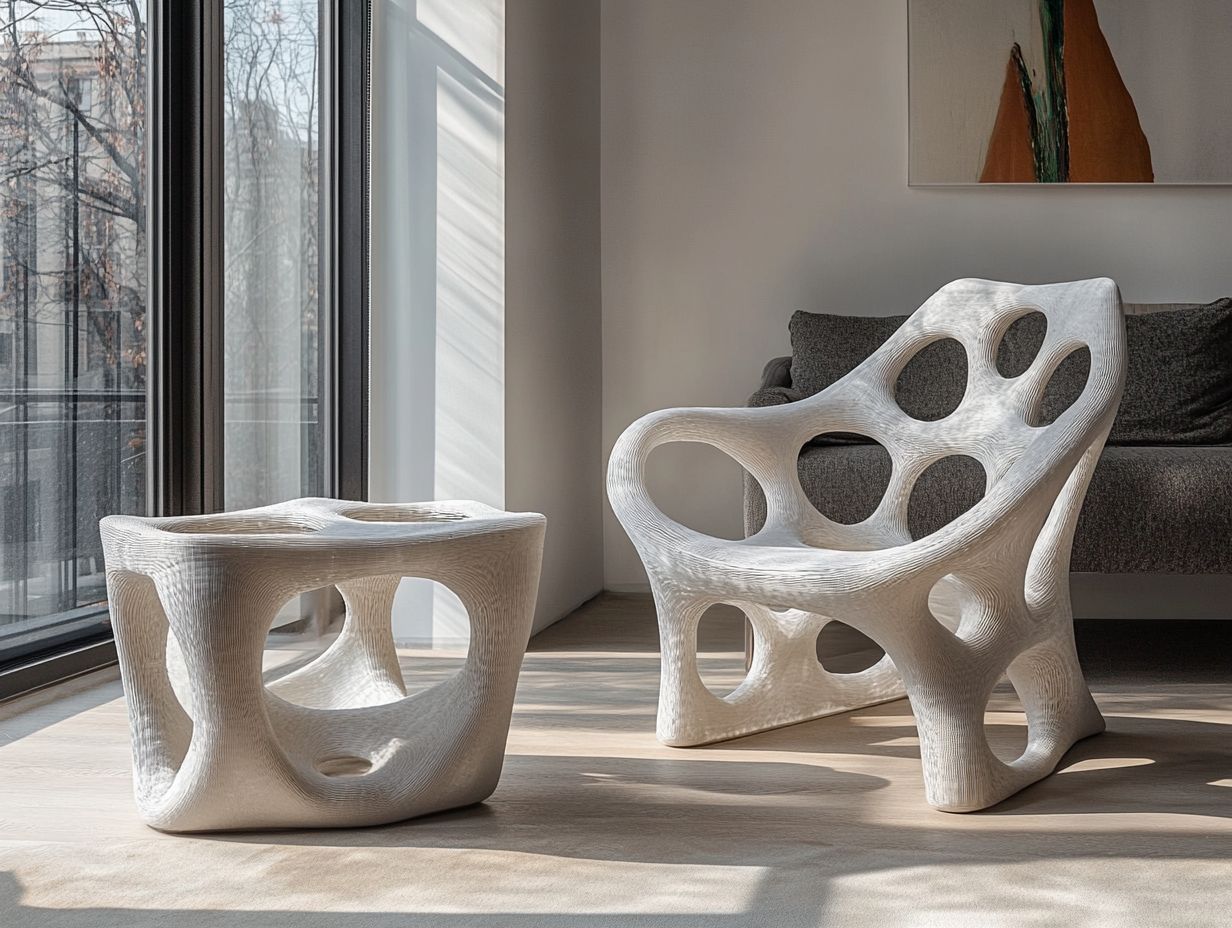
Despite its many advantages, 3D printing in furniture design presents challenges. For instance, you might encounter expensive design costs for complex designs, leading to significant pricing variability that affects your overall expenses.
Material constraints limit the range of textures and finishes available, making it tricky for designers to achieve the aesthetic outcomes you desire. The intricacies involved in elaborate designs can complicate project execution, demanding specialized skills and special computer programs used for designing, which may only be accessible through select service providers.
This added complexity can lead to potential hiccups during the post-production phase, where you might need to make refinements or corrections.
Ultimately, while this technology opens doors to innovation and creativity, stay informed about these limitations to make the best choices regarding the final product, both in terms of quality and cost-efficiency.
The Cost of 3D-Printed Furniture
Grasping the intricacies of 3D-printed furniture costs is essential for you as both a designer and a consumer.
Various pricing elements such as modeling expenses, project scope, and the average cost of materials can significantly impact the final price of custom pieces. Knowing these factors helps you understand pricing better, enabling you to make informed decisions and appreciate the true value of your investment.
What Influences 3D-Printed Furniture Costs?
Several factors influence the cost of 3D-printed furniture, including the level of customization you require, the complexity of the design, and the specific quality you expect from the finished product. Understanding the role of 3D-printed furniture in sustainable living makes effective project management crucial for budgeting.
If you re aiming for a highly customized piece, you ll need unique specifications, which often involve advanced software and skilled labor. This can drive up costs due to the extended project execution time.
Additionally, intricate designs may require more sophisticated printing technology and materials, impacting your overall budget. Your design team’s expertise plays a crucial role; professionals with extensive experience in 3D modeling and prototyping may charge higher fees, but their skills ensure a superior end product that aligns with your expectations.
Comparing Prices to Traditional Furniture
When you’re comparing the prices of 3D-printed furniture to traditional options, it’s vital to consider various factors, such as pricing variability. Understanding the process of creating 3D-printed furniture can help clarify how these can fluctuate based on modeling charges, production methods, and the anticipated quality of the final products.
The customization possibilities that come with 3D printing often lead to one-of-a-kind designs, which can be prohibitively expensive in conventional manufacturing due to inherent complexities. While traditional furniture may boast lower upfront costs for mass-produced items, the flexibility and personalization offered by 3D printing can lead to substantial long-term savings through reduced waste and more efficient project management.
However, in some cases, the initial investment in 3D printing technology and materials might outweigh the benefits, especially for large-scale projects where traditional methods excel due to economies of scale. Therefore, conducting a thorough analysis is essential to find the approach that best aligns with your budget and design aspirations.
Is 3D-Printed Furniture Worth the Cost?
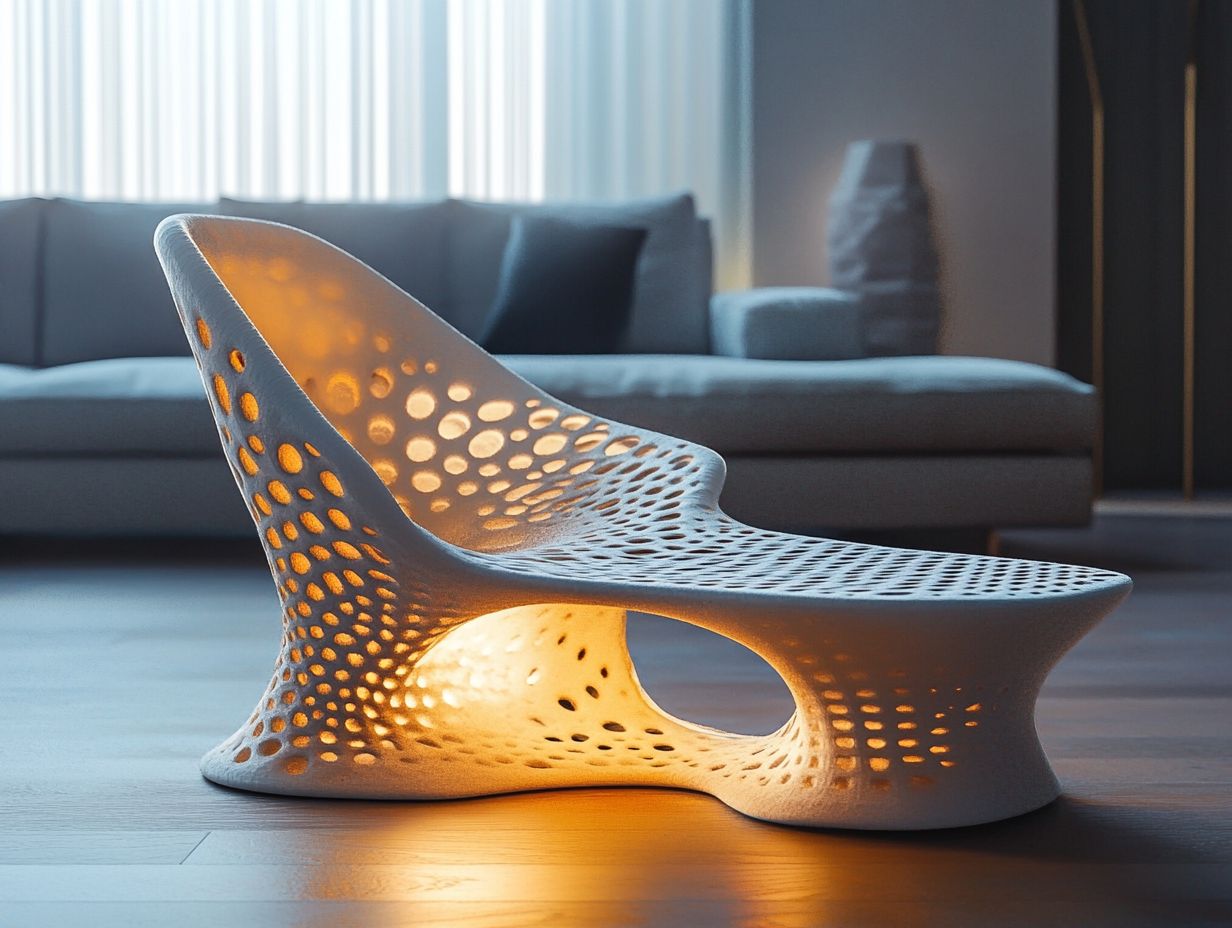
To determine if 3D-printed furniture is worth the investment, carefully evaluate several key factors. Consider the quality and longevity of the pieces, reflect on your personal preferences, and assess how well the furniture aligns with your specific design and functionality requirements. For a deeper understanding, check out the rise of 3D-printed furniture.
Each of these elements plays a crucial role in making a well-informed decision.
Explore your options today to see how 3D printing can elevate your space!
Considering Quality and Longevity
When evaluating 3D-printed furniture, prioritize quality and longevity, as these factors significantly influence the durability and aesthetic appeal of the final product. The design quality is also achieved through careful post-processing techniques.
In the world of additive manufacturing a method of creating objects layer by layer selecting the right materials is crucial. You want pieces that not only catch the eye but also stand the test of time. As you navigate your decision-making process, consider modeling charges and project complexity. These elements impact both the financial feasibility and functional performance of your furniture.
By developing a thorough understanding of various materials whether it s plastic, metal, or composite you can craft furniture that perfectly suits your style! This knowledge helps you avoid common pitfalls and ensures a successful outcome.
Personal Preferences and Values
Your personal preferences and values significantly influence your decision to invest in 3D-printed furniture. As you seek unique customization options, you aim for pieces that align with your lifestyle and enhance your overall experience.
When evaluating your choices, you weigh the flexibility offered by 3D printing against the timeless charm of traditional furniture. The opportunity to tailor dimensions, colors, and materials to suit your distinct aesthetic can be particularly appealing, especially if you desire something that truly reflects your identity.
With the advent of furniture visualization technologies, you now have the power to experiment with design concepts in a virtual space. This interactive process simplifies your decision-making and ensures that the final product integrates seamlessly into your living environment, marrying function with artistry in a way that feels uniquely yours.
Frequently Asked Questions
1. What factors determine the cost of 3D-printed furniture?
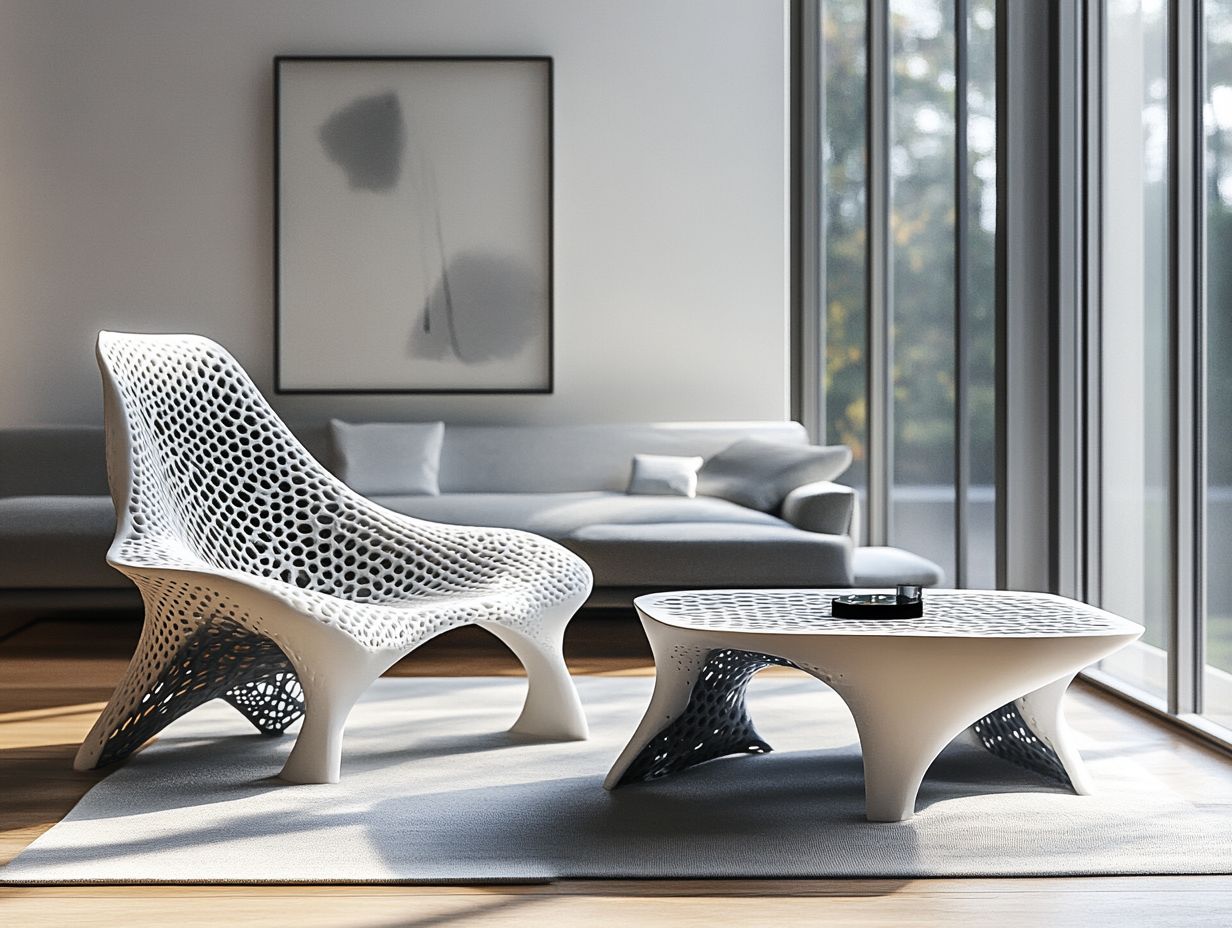
The cost of 3D-printed furniture is influenced by several factors, including the type of materials used, the complexity of the design, and the size of the furniture. Additionally, understanding the environmental impact of 3D-printed furniture can also play a role in the overall cost, which may include the time and labor required for printing and finishing the piece.
2. Is the cost of 3D-printed furniture worth it compared to traditional furniture?
It depends on your personal preferences and needs. While 3D-printed furniture may be more expensive upfront, it offers unique and customizable designs that may not be available with traditional furniture. Additionally, it can be more durable and longer-lasting.
Typically, the cost of 3D-printed furniture includes everything from materials to labor. However, there may be extra fees for customizations or special requests, so it’s important to discuss all details with the printer beforehand, especially when considering the technology behind 3D-printed furniture.
4. Does the cost of 3D-printed furniture vary depending on the printer?
Yes, the cost can vary from printer to printer. Each may use different materials, technology, and processes, affecting the overall cost. It’s best to compare prices and reviews from various printers before making a decision.
5. Are there any cost-saving benefits to choosing 3D-printed furniture?
One potential cost-saving benefit is that 3D-printed furniture can be produced on demand, reducing the need for storage and inventory costs. If a piece gets damaged, it can be easily reprinted instead of having to replace the entire item.
6. How do I know if the cost of 3D-printed furniture is within my budget?
Before commissioning a 3D-printed piece of furniture, discuss the cost with the printer and obtain a detailed quote. This will help you determine if the cost fits within your budget and allow for necessary adjustments to the design or materials used.
Explore your options and start designing your unique piece today!

